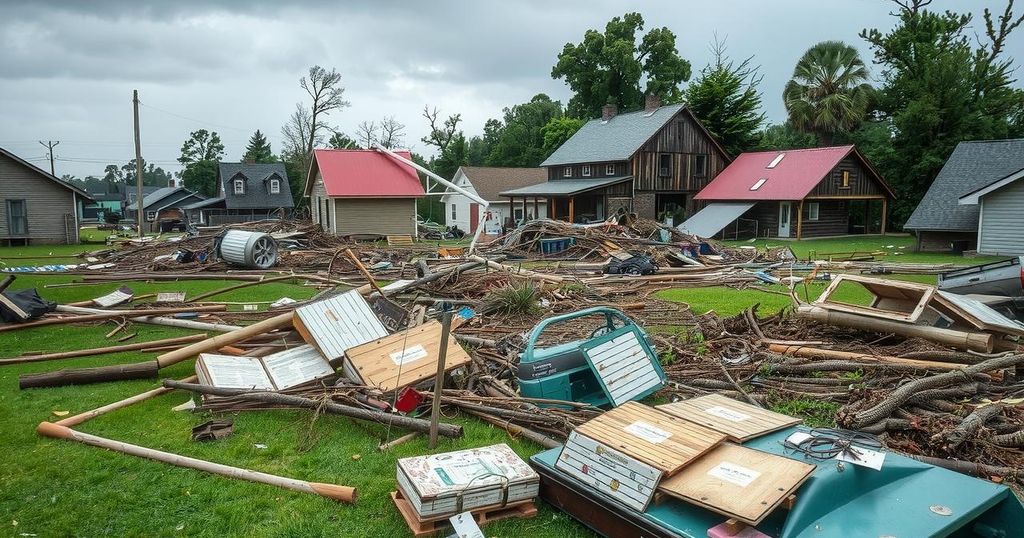Farmers Struggle to Recover from Hurricane Helene’s Devastating Impact

Farmers in Georgia, particularly Chris Hopkins, are struggling to recover from Hurricane Helene, which devastated crops and facilities over two months ago. Estimated agricultural losses exceed $10 billion across the affected southeastern states. Despite some government aid, farmers express the urgent need for assistance as they face significant financial and emotional burdens.
Farmers in Georgia continue to grapple with the aftermath of Hurricane Helene, which wreaked havoc on their crops and facilities over two months ago. Chris Hopkins, a farmer in Lyons, reports seeing extensive damage, including a destroyed irrigation system and a ruined grain bin. The emotional toll has been significant, prompting many farmers to question their futures and whether to rebuild or abandon their efforts.
Hurricane Helene, which struck on September 26 as a Category 4 storm, devastated agricultural areas from Florida to Virginia, with total damages expected to exceed $10 billion. The immediate effects were severe—Georgia farmers alone faced losses estimated at $5.5 billion, while North Carolina reported $3.1 billion in agricultural damage. Many farmers, like Hopkins, attempted to salvage their cotton harvest, which was impacted just as the fall harvest season began.
Hopkins estimates a 50% loss in cotton yield on his 1,400 acres, leading to significant financial setbacks. “The lint was open and fluffy and hanging there,” he explained, signifying the crop’s vulnerability. He anticipates approximately $430,000 in losses from cotton alone, excluding additional expenses for debris removal and equipment repairs. Furthermore, the storm severely affected poultry operations, with farms losing hundreds of facilities.
State and federal responses include emergency loans and proposed disaster relief funds, yet farmers like Jeffrey Pridgen stress the urgency of receiving assistance. Pridgen, a long-time chicken farmer, faces extensive rebuilding costs for his damaged facilities, projecting several years to recover from the disaster. The poultry industry in Georgia specifically sustained a substantial economic impact, estimated at $683 million.
Despite these losses, experts see little effect on consumer prices due to the availability of crops from other regions. Nonetheless, the situation remains precarious for the farmers directly impacted by Helene’s destructive path as they begin their daunting recovery process.
Hurricane Helene struck the southeastern United States on September 26, 2023, resulting in significant agricultural damage across various states, including Florida, Georgia, North Carolina, Virginia, South Carolina, and Florida. As a major Category 4 hurricane, it created widespread destruction of crops, infrastructure, and facilities crucial for farming operations, particularly in rural areas where communities depend heavily on agriculture. Experts anticipate the overall financial toll from this natural disaster to exceed $10 billion, bringing renewed focus on the stability of farming practices and infrastructure in hurricane-prone regions.
The ongoing recovery from Hurricane Helene highlights the severe impact natural disasters can have on the agriculture sector, particularly in vulnerable regions like the Southeast United States. As farmers confront significant financial losses and emotional distress, community support and timely government assistance are critical in facilitating the rebuilding of their operations. Effective disaster relief measures and a comprehensive recovery strategy are essential to preserving the livelihoods of farmers and ensuring food security going forward.
Original Source: brookingsregister.com








